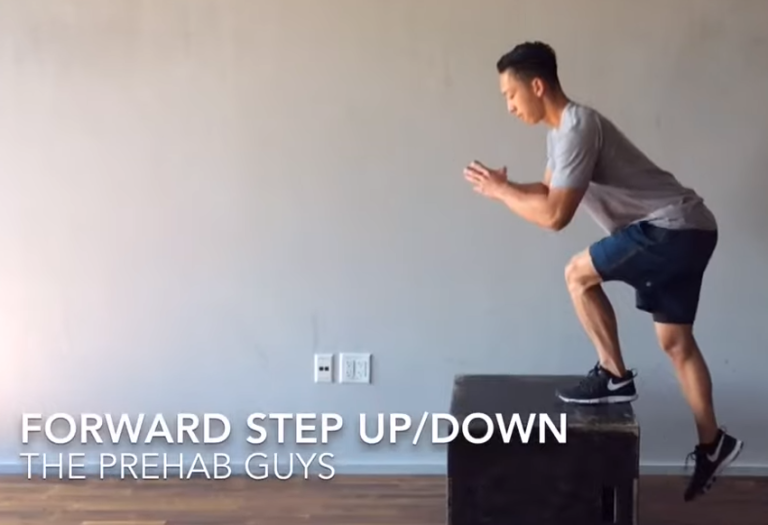Leg pain relief for Hypermobility Sufferers
I regularly experience pain in my leg joints, in particular my hips and knees. The intention of this page is to share exercises and techniques that have worked for me to manage this pain and reduce the frequency of flare ups. As always, I recommend you visit a qualified physiotherapist to get a list of exercises tailored to your body. Please review my disclaimer before attempting any exercises.
Step Ups
Step Ups and step downs are an exercise you can use to target your knees and glutes, and can be done without equipment as long as you have a solid base to step up to. Place your foot up on the step and slowly lift your body up in a controlled manner, keeping your knee vertically straight as you do so. Then step back down with the other leg landing on the floor. Start with a low number of reps and sets, and try to build up gradually each time you do it. I aim for 3 sets of 10 reps on each leg. If this gets too easy, you can increase the difficulty of this by holding weights or a medicine ball. Check out the link below for a great tutorial on how to do this exercise safely.
Single Leg Balance
Another exercise that is useful to build up the muscles in your legs is the single leg balance. I use this one in particular to focus on my quads and provide better support for my knees. If you're starting out on this one, simply stand on the floor with feet rounly hip width apart and gently lift one leg off the floor to place your balance on the other leg and hold for 30 seconds. As you progress, you can use a bosu ball to provide more challenge. Some people find it easier to hold a weight in each hand to provide more stability. Check out the video at the link below for a tutorial.
Hip extension
This exercise stengthens your hips and glutes, but also benefits your knees given the stability required in your quads and core to hold the position. Rest your upper back on a bench, or even something stable like a chair or sofa. Walk your legs out so your knees are at 90 degress. Dip your body down in a slow and controlled manner so that your bottom is almost touching the ground. Then slowly lift your hips back up and hold at the top. You can increase the difficulty of this exercise by lifting one leg off the gound to focus on a particular leg. You can also put a weight plate or barbell on your waist if you can keep it there safely. Check out the video at the link below for a tutorial of the double leg version.
Squat
The squat is a great exercise to include in your regular workouts as it strengthens your core, glutes and muscles that support your knees. Check out the video in the link below for a tutorial.
Heel Raise
The heel raise targets your calves. I sometimes experience plantar fasciitis, which is a pain in the bottom of your foot that can be caused by sunken arches in your feet. I was prescribed this exercise by my physiotherapist for that condition, as well as when I felt pain in my achilles. I like the one best with the use of a step, or your stairs at home, rather than a heel raise on a flat surface. You can make this exercise more challenging by doing a heel raise on one leg at a time, or by holding weight on your shoulders or in a backpack. Check the first part of the video below for a tutorial.
Kinesiology Tape
One of the best products that I've purchased to easy knee and ankle pain is Kinesiology Tape. My physiotherapist has often taped these joints for me for extra support to help take the strain off them and speed up recovery. There are lots of videos on YouTube for how to apply tape to support your joints, depending on what your injury is or the type of pain you are feeling.
©Copyright 2024 Hypermobility Helper. All rights reserved.
We need your consent to load the translations
We use a third-party service to translate the website content that may collect data about your activity. Please review the details in the privacy policy and accept the service to view the translations.






